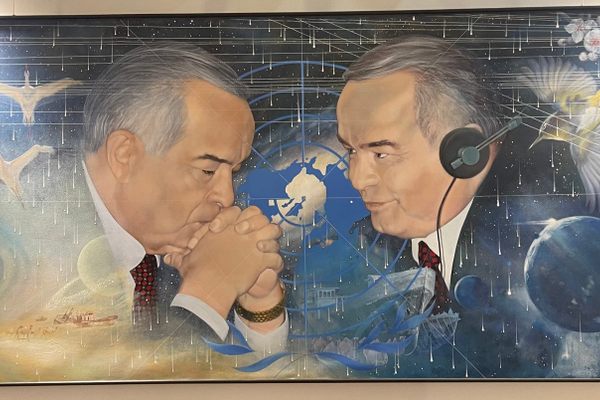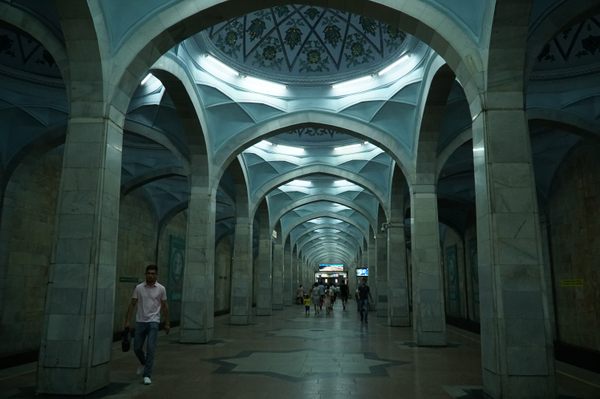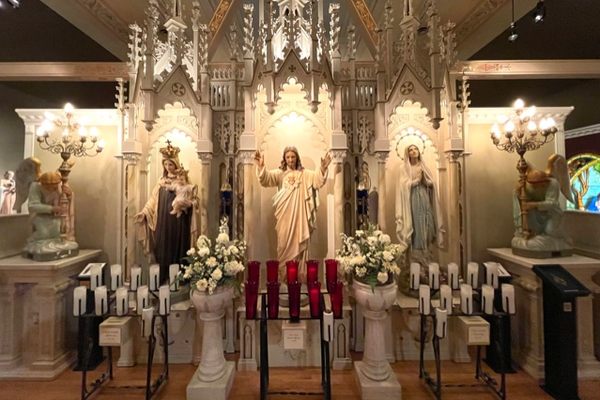Amir Timur (Tamerlane) Museum
Looking for a unifying history, Uzbekistan finds its answer in a 14th Century Turco-Mongol conqueror... despite the fact he wasn't Uzbek.
It can be difficult for a country created out of whole cloth to find a unifying identity. Such is the case with Uzbekistan.
One of two doubly landlocked countries in the world – a landlocked country surrounded entirely landlocked countries, the other being Liechtenstein – Uzbekistan as a national idea did not exist until the Soviets created it in the 1920s, complicating the process of state formation in Uzbekistan today. (The soviets were also responsible for environmental disaster within Uzbekistan such as the draining of the Aral Sea.)
Uzbekistan officially came into existence in 1991, after the break-up of the Soviet Union, and holds within its borders a mix of ethnic groups, including Uzbeks, Russians, Tajiks, Kazakhs, Karakalpaks and Tatars.
In order to help unify the diverse population held together by its soviet created borders the new Uzbek state looked to pre-Russian Central Asian past for unifying national myths, in order to encourage a cohesive Uzbek identity.
The figure that emerged out of this search through Central Asian history was the highly controversial figure of Amir Temur (Tamerlane).
A fourteenth-century conqueror of Western, South and Central Asia, Amir Temur’s main qualifications was that his huge empire was located in the modern Uzbek state. He founded the Timurid Empire and Timurid dynasty (1370–1405) in Central Asia. Central Asia blossomed economically and culturally under his reign. At the same time, Baghdad, Damascus, Delhi and other Arab, Persian, Indian and Turkic cities were sacked and destroyed.
Ironically, the unifying figure of Uzbekistan wasn’t Uzbek at all and instead belonged to the Barlas, a Turko-Mongolian tribe. In fact, it was the fall of the Timurids that allowed the Uzbek Khaqanate to gain power and form the basis of modern Uzbeks.
Nonetheless, Timur has been officially recognized as a national hero of Uzbekistan, because his imperial capital was located in Samarkand. His name has replaced Marx’s and Lenin’s on street signs and government buildings all over Uzbekistan.
Opened in 2006, the Amir Timur Museum is one of the newest museums in Tashkent. It was established to commemorate the 660th birthday of Amir Timur. The museum’s blue dome and ornate interior reference Central Asian Islamic architecture. The museum collection consists of ancient manuscripts, paintings, and engravings of Timurid’s age. The collection also includes a 14th century Quran from Syria. Amir Timur’s military career is reconstructed in a celebratory manner. The gardens surrounding the museum contain a statue of Timur on horseback and some prominent fountains.
Lingering Soviet influence is acutely felt in the Amir Temur museum. Murals reminiscent of social realism decorate the lobby of the museum. The museum also features an exhibit on president Islam Karimov. Karimov came to power under the Soviet regime and has had a firm grip on the presidency since 1990.
Know Before You Go
Located in the center of Tashkent.














Follow us on Twitter to get the latest on the world's hidden wonders.
Like us on Facebook to get the latest on the world's hidden wonders.
Follow us on Twitter Like us on Facebook